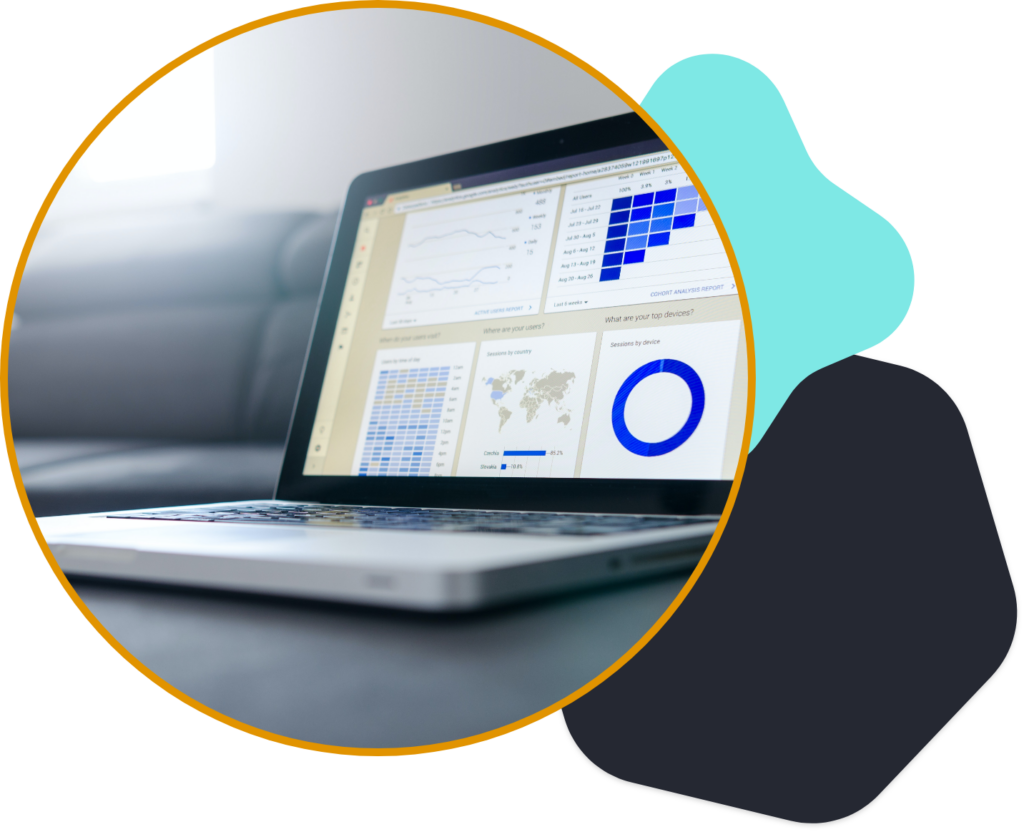The Window of Digital Opportunity for the Middle Market

While there is some debate over what range of revenue falls in the Middle Market (anywhere from $5 million to $1 billion, depending on who you ask), two things everyone should agree on are a) Middle Market companies sit between Main Street businesses or venture capitalist funded startups, and huge, multinational corporations and b) Middle Market companies contribute significantly to job creation and economic growth.
What’s So Special About the Middle Market?
The Middle Market is booming. We’re not just making this up. According to The National Center for the Middle Market (NCMM) 2022 year-end indicator report, 57% of middle market companies reported employment growth over the past year. In addition, 51% introduced a new product or service, and 39% expanded into new domestic markets.

To keep up with that growth, Middle Market businesses can no longer afford to ignore the wide open window of opportunities to the digital world. It’s time to embrace this era and use technology to improve the customer experience. Twenty years ago, embracing digital opportunity simply meant creating a basic website. Then having a social media presence was tossed into the mix. And even though it seems like there is a new piece of technology emerging every single day and it may be hard to keep up – there are some key ways Middle Market companies can embrace the digital world. Many are already walking in the right direction – the NMCC report indicates that Middle Market businesses are allocating 19% of their investments to “information technology” and another 19% to “training and development.” Investing in digital opportunities is a long-term investment. Trust us, the digital world isn’t going anywhere.
Open that window of opportunity, let in some fresh ideas, streamline operations, reduce costs, and provide more personalized services to customers. Let’s go.
Beef Up that Website
Simply having a website is not enough anymore. Everyone has a website. Having a user-friendly, ADA-compliant, optimized for mobile website that’s also optimized for search engines? That’s ideal. But online presence doesn’t end with launching a website. Websites are living things – they require updates, new content, and the occasional design refresh. A website that has been the exact same since the day it launched could definitely use some TLC.
Websites and digital products are not immune to trends, and changes in consumer preference and taste. While you don’t need to be on top of every single digital trend, having an idea of what consumers are looking for in a website can be a huge advantage. Or maybe you need to go beyond a simple website and a basic Instagram account. Maybe a mobile app or a web app would benefit the business? Our team at Mile6 can help you find the answers.
Digital presence isn’t just a website. Connecting to customers through social media is increasingly important. By combining a stellar website with a kickass social media strategy, Middle Market businesses can reach more customers, build stronger relationships, and drive sales.
Let Your Customers Serve Themselves
As much as people complain about grocery store self-checkout and those kiosks at fast food restaurants, they have to admit self-service options on the web and in the real world can increase efficiency and decrease the stress of having to talk to an actual person. And digital self-service is what the people want.
According to the Harvard Business Review, 81% of customers attempt to take care of matters themselves before reaching out to a service representative. HigherLogic reports 79% of customers expect organizations to provide self-service support tools.
Digital self-service includes:

Chatbots that act as virtual assistants and use AI technology to answer common questions and solve common problems.

Customer portals or accounts where customers can change their password, update their information and preferences, track their orders

Knowledge bases and discussion forms where resources, guides, and how-tos are published and users can interact with others to troubleshoot problems.
Putting the customer in control allows businesses to reduce labor costs, improve convenience for customers, and increase customer satisfaction. And unlike traditional customer support, especially for Middle Market companies that don’t have access to (or the budget for) massive call centers, digital self-service is available 24/7/365 (except for the occasional site maintenance downtime). Based on HubSpot’s research, Two-thirds of consumers view the most frustrating aspect of getting customer service is waiting on hold or having to explain the same information to multiple representatives. If the customer can resolve that issue themselves, there is less frustration for everyone involved. If the limited resources of a customer support team can be reserved for problems beyond the capabilities of digital self-service, that means less hold time, less waiting, less frustration, and more positive experiences. While technology can’t replace every aspect of customer support, melding self-service and real-person support teams creates an ideal user experience.
Get In, We’re Going Shopping
Think about the last time you bought something. What are the chances you made that purchase online? Ordered something off a retailer’s website, groceries for delivery or pickup curbside? Even takeout? Online shopping is everywhere. Or “e-commerce,” as the industry calls it. Online shopping is no longer limited to big names like Amazon, Walmart, and Target. In fact, online sales are expected to account for 16.4% of all US retail purchases in 2023, and the US e-commerce market will reach over $1.1 trillion in sales this year. Yes, trillion.
E-commerce is no longer limited to selling physical goods. Middle Market companies can embrace e-commerce to sell both physical goods and digital services, digital content, and even webinars to customers far beyond their geographic location. Embracing e-commerce capabilities provides more convenience, and creates new revenue streams.
Middle Market companies that fail to implement e-commerce strategies risk losing out on a chunk of the market share and therefore losing revenue. And nobody wants to lose revenue. Plus, it’s easier than ever to build and manage an e-commerce storefront on your website. Once you decide to take the leap into the e-commerce space, the team at Mile6 is here to help design and develop your online storefront.
Data is Your Friend
Data can be a scary word, especially if you toss in words like “analytics” and “machine learning algorithms.” Add in all of the talk about privacy and permissions, and it can be a bit overwhelming. But data is useful, and not as scary as it may seem. Consumer data can be your friend.

Data can be gathered from web analytics tools such as Google Analytics and Hotjar that report clicks, page views, user demographics, and behavior. That is, assuming the user has location services turned on, and the proper permissions allowed in their web browser. To put the customers more in charge of their own data, companies can ask them directly. Plenty of data can be gathered from email and SMS sign-ups, surveys, loyalty programs, and quizzes such as those “find out your ideal hair care routine by answering a few simple questions” types.
Shopify reports 57% of consumers are increasingly concerned with how brands use their personal information, meaning transparency about data usage is increasingly important. While customers love personalization, there’s a fine line between “Oh cool check out my Spotify Wrapped” and “Holy shit this is kind of creepy.” There is such a thing as over-personalized, and that line is different for each and every person. Generally, customers prefer more personal content from brands they trust and have built a relationship with. You wouldn’t give out your home address to a complete stranger (hopefully) but to a friend? Of course you would. It’s like that. Middle Market business can utilize community-building tactics and customer data to build that friendship, gain that trust, and create a better user experience.
Don’t allow data to be scary. Be transparent, be purposeful, and allow data to help you help your customers. Data insights allow you to personalize offerings (without over-personalizing), streamline operations, and provide better customer service.
The Middle Market is Ready
While Middle Market companies might not have the same level of capabilities of Amazon, the technology available today makes it easier than ever to enhance digital presence, understand consumer behavior, increase efficiency, and increase revenue. Enhance that website. Put your customers in the driver’s seat. Launch that web store. Be transparent with your data collection. Keep growing. The Middle Market businesses have an incredible window of opportunity to embrace the digital world. Open that window to stay ahead of the competition, win customer loyalty, drive growth, and let in a nice breeze.
